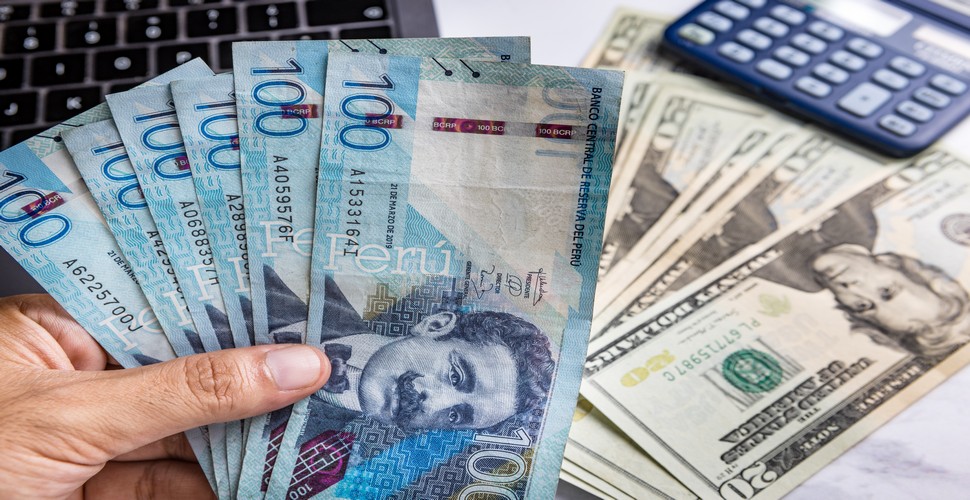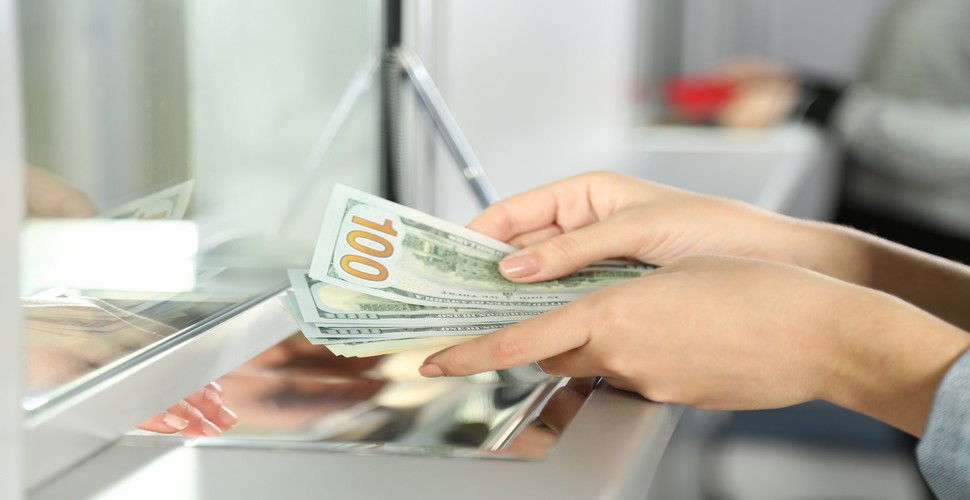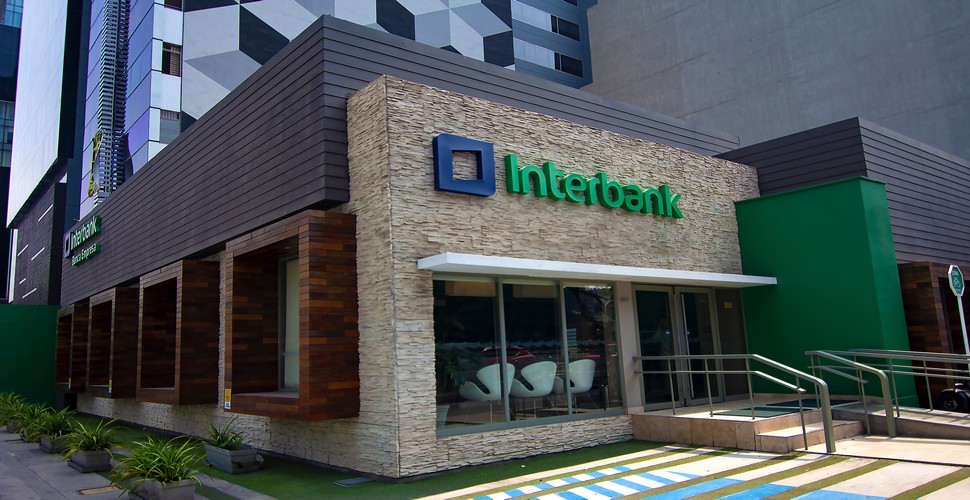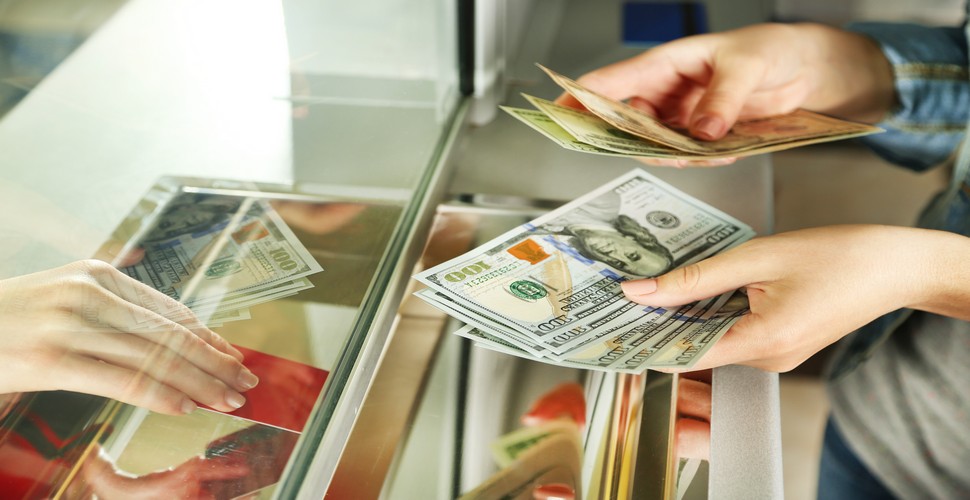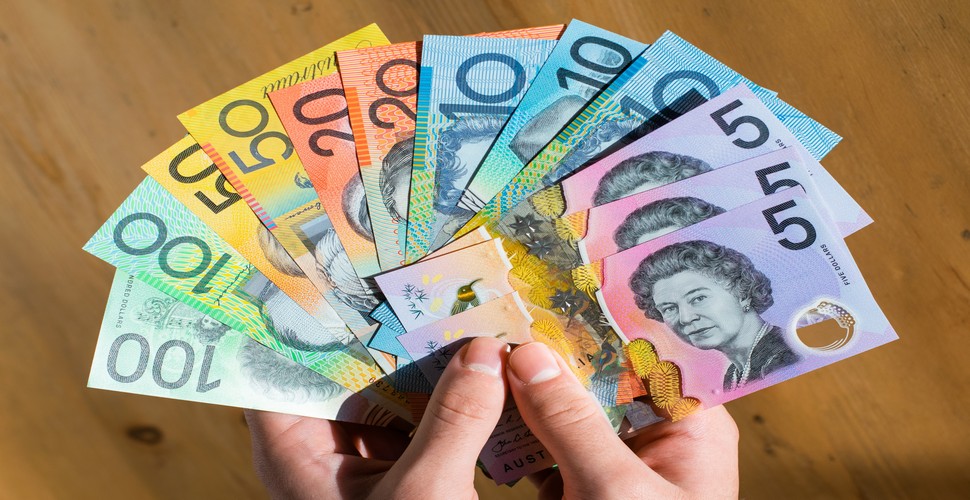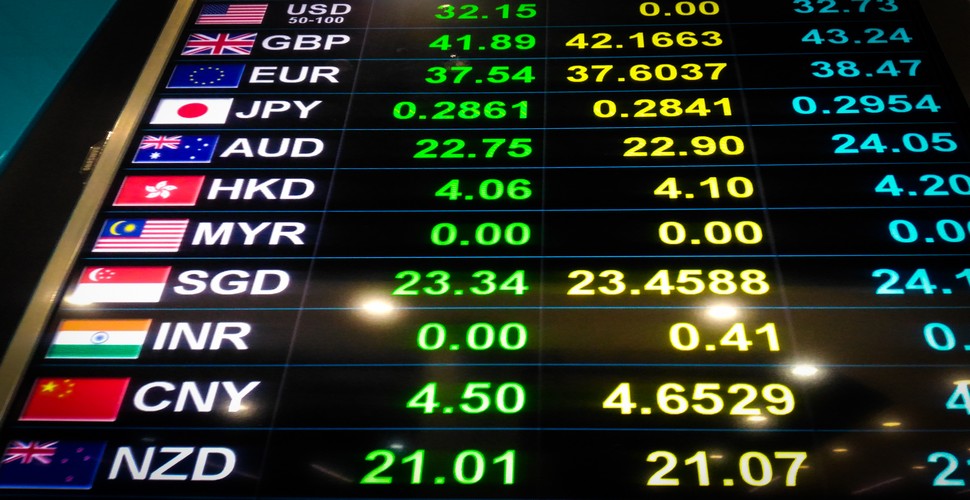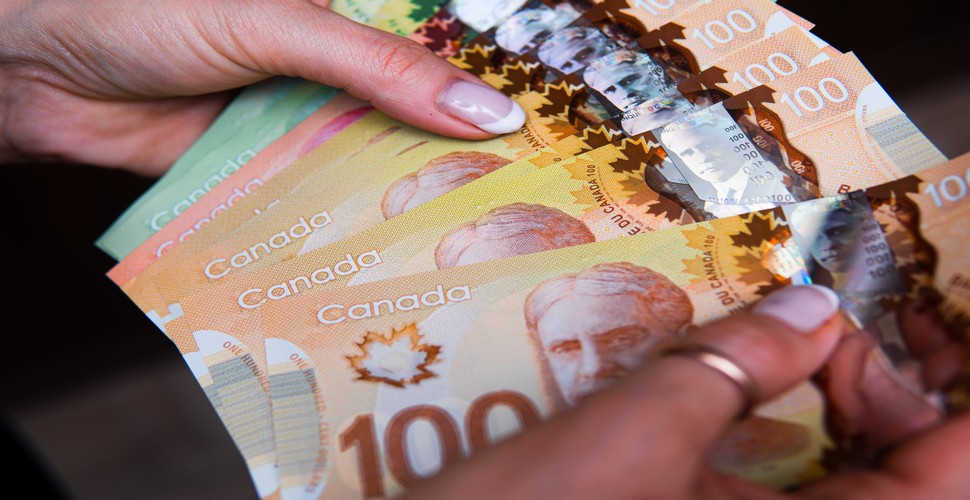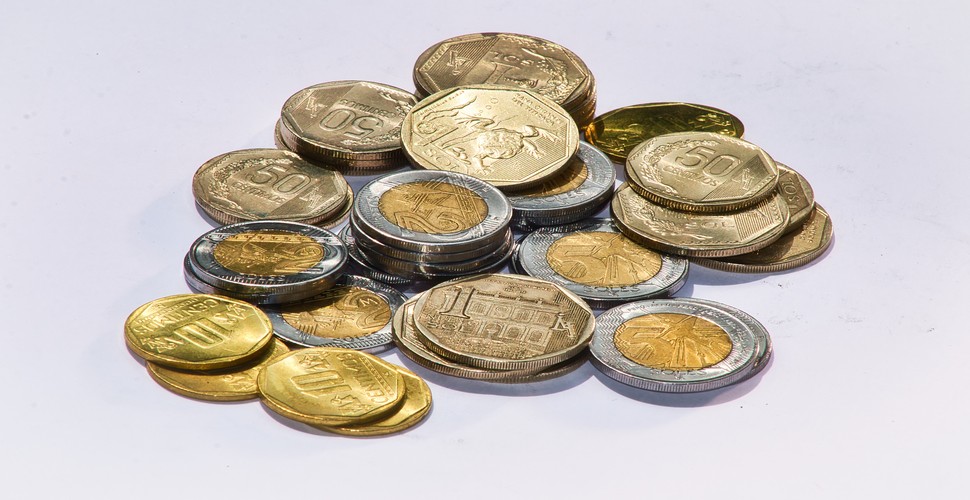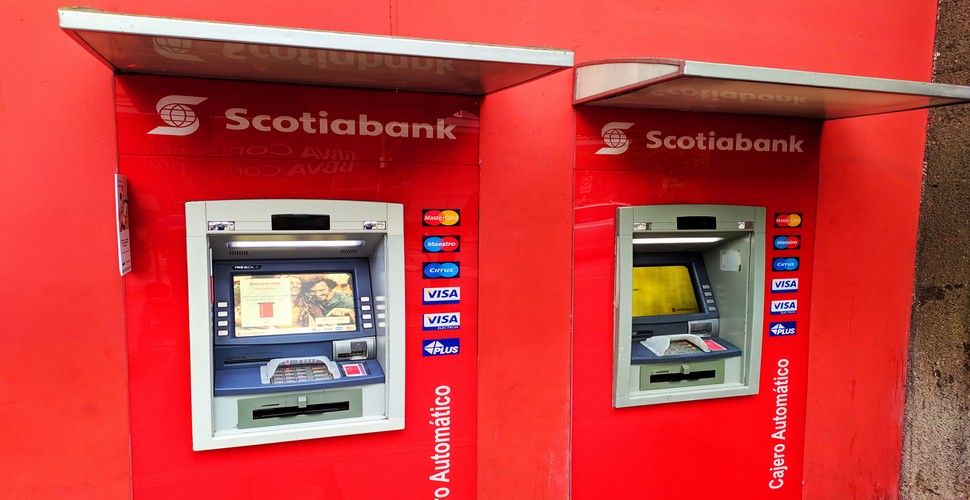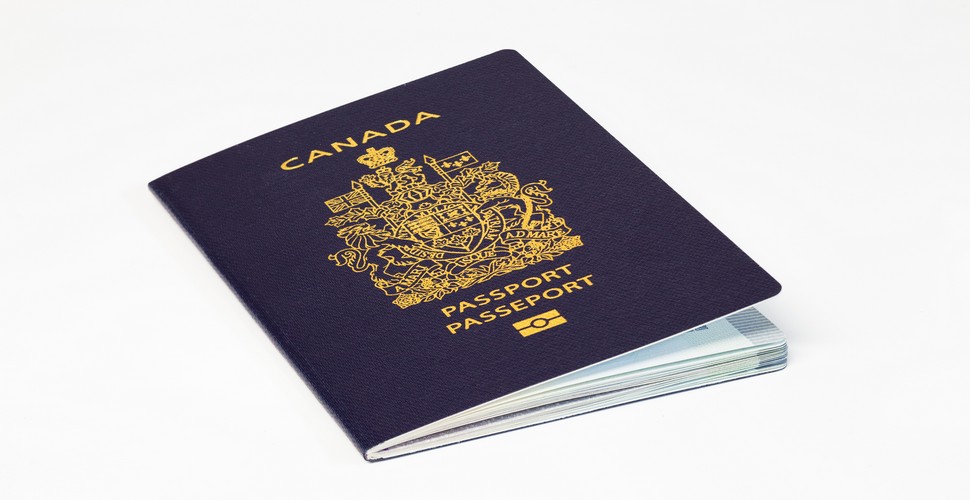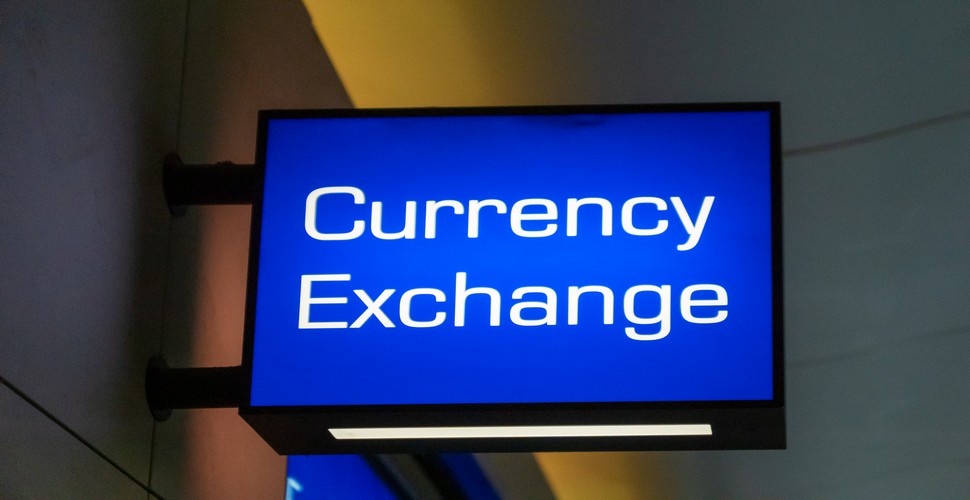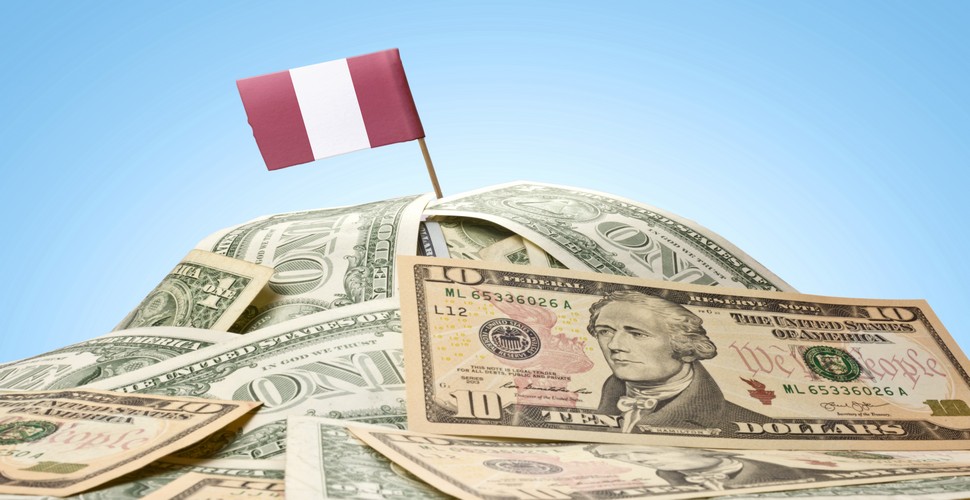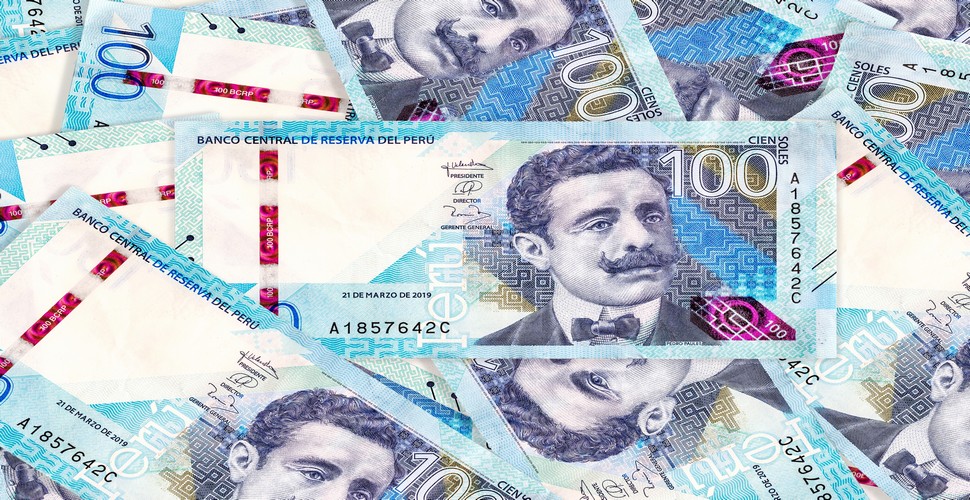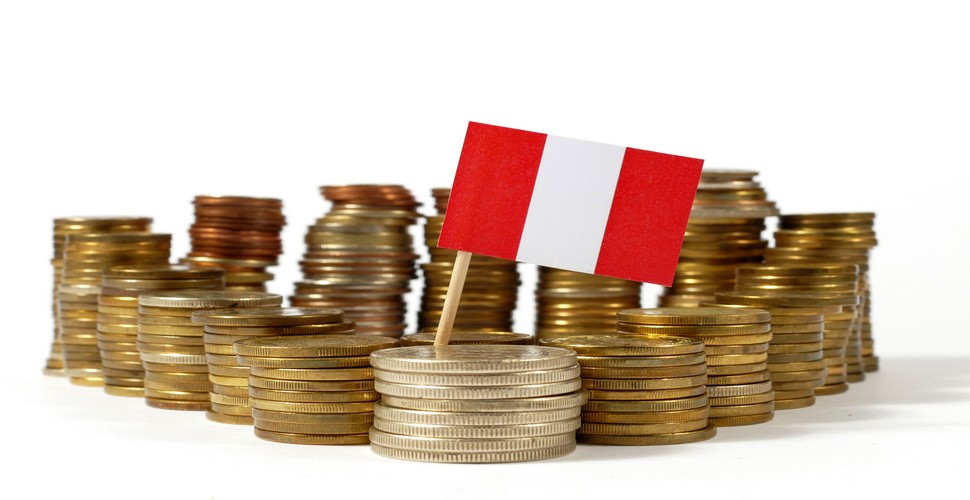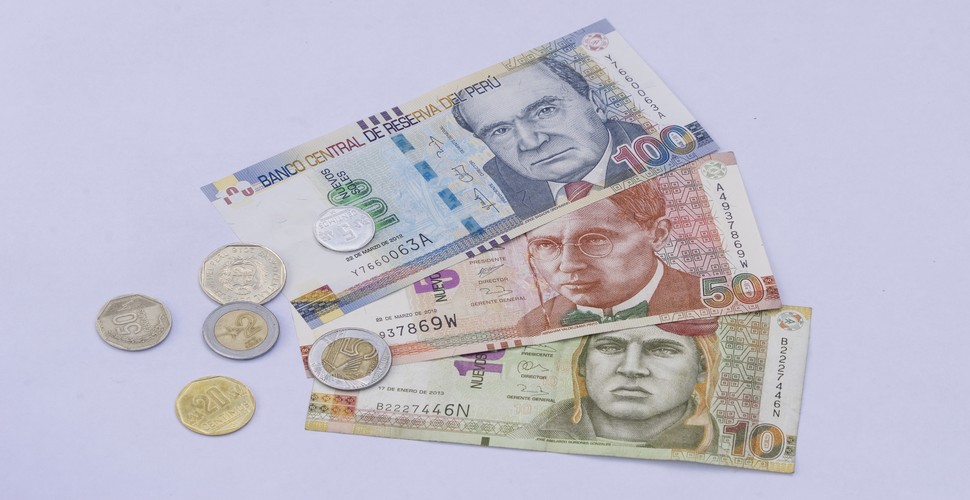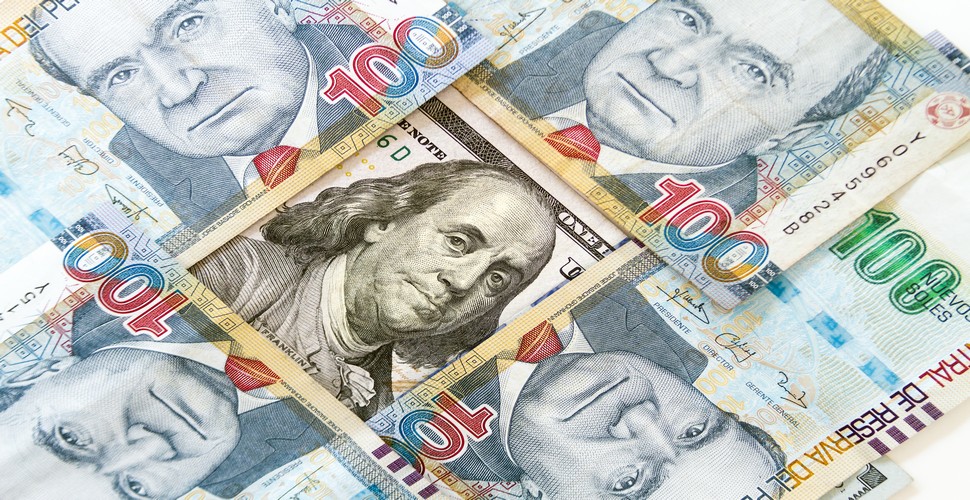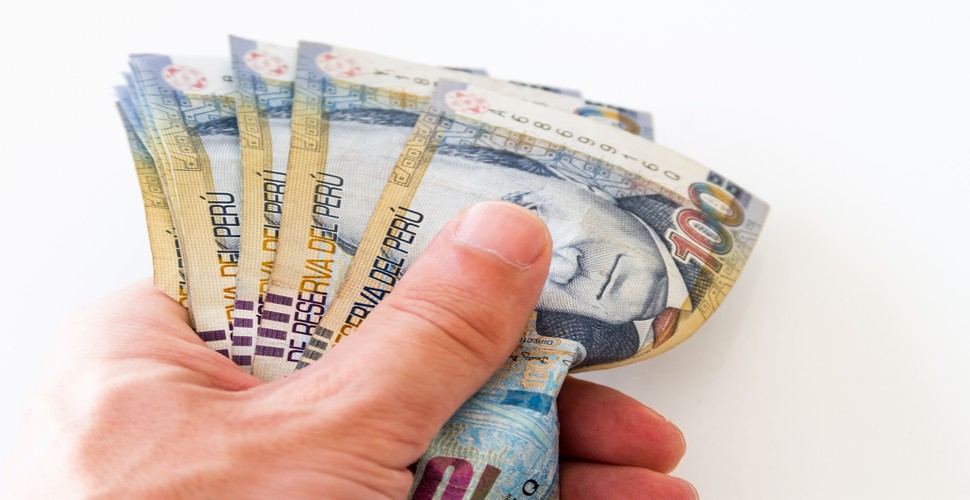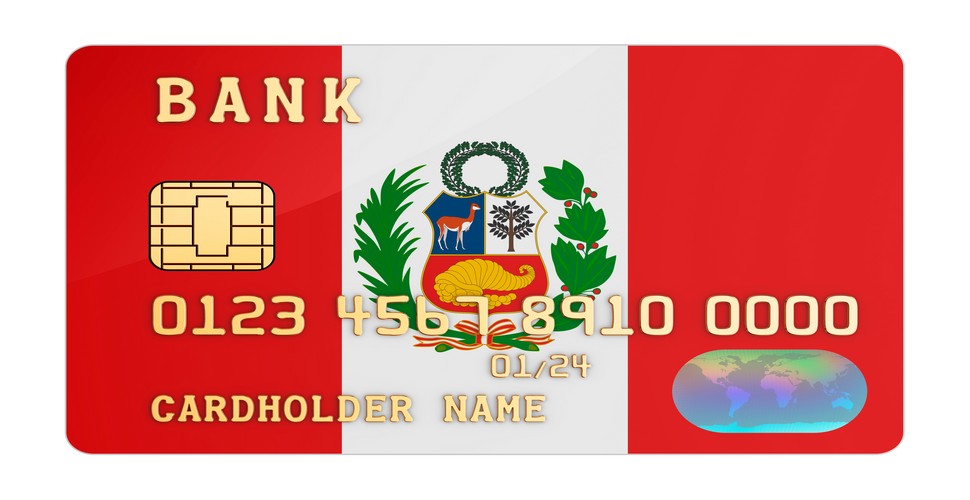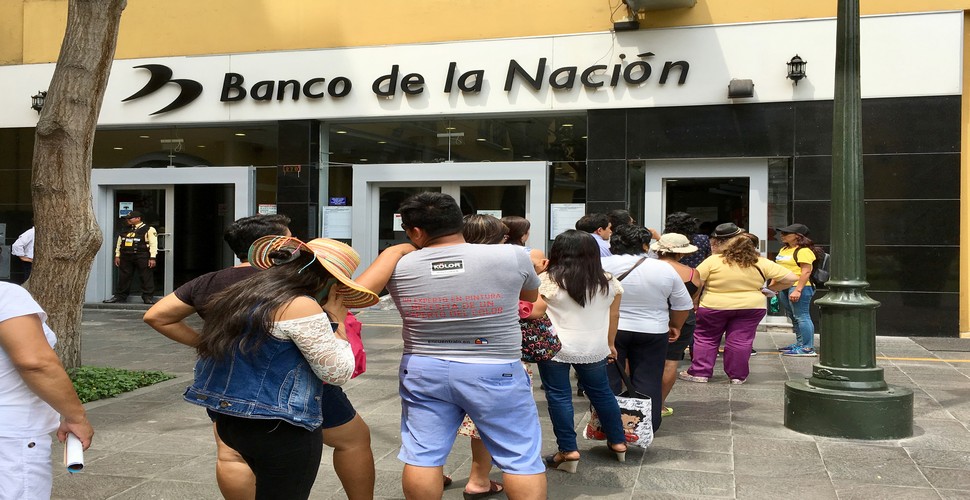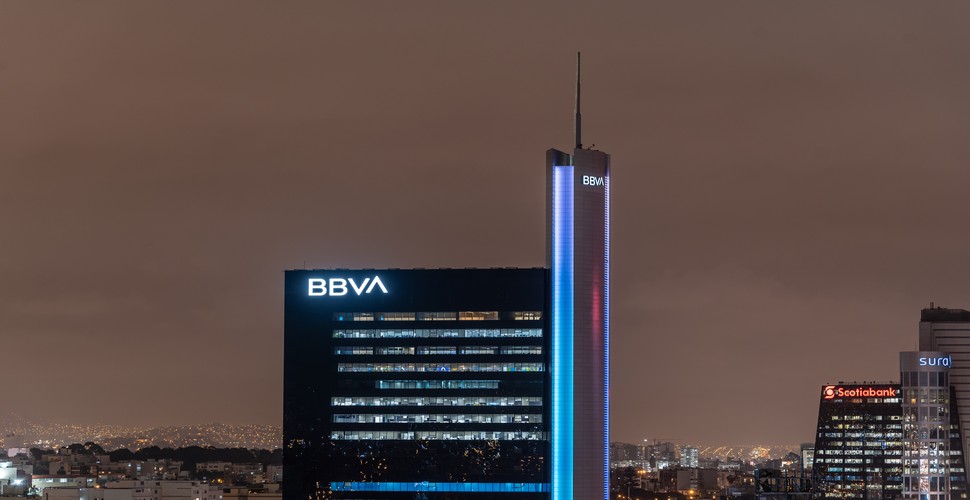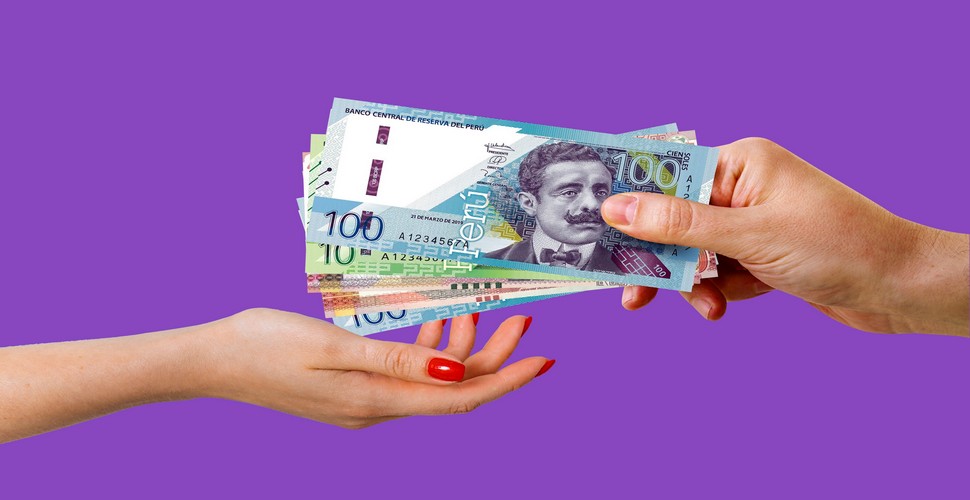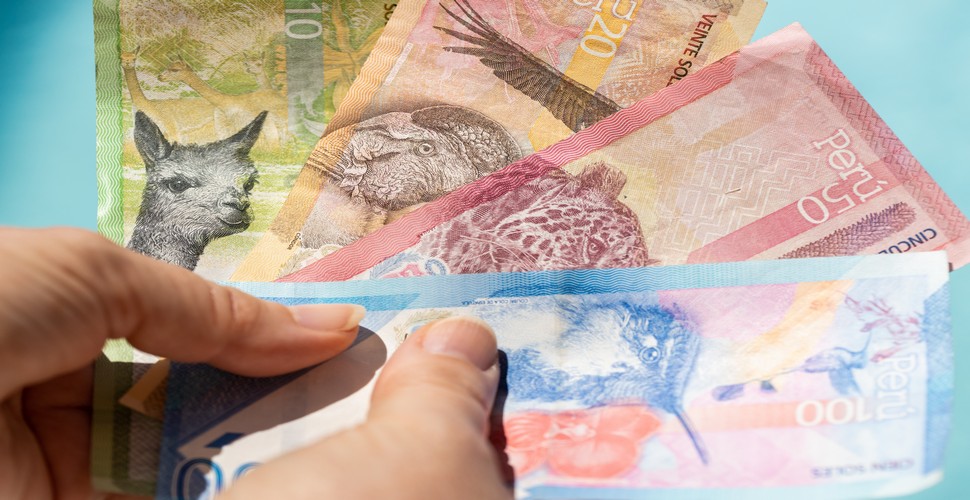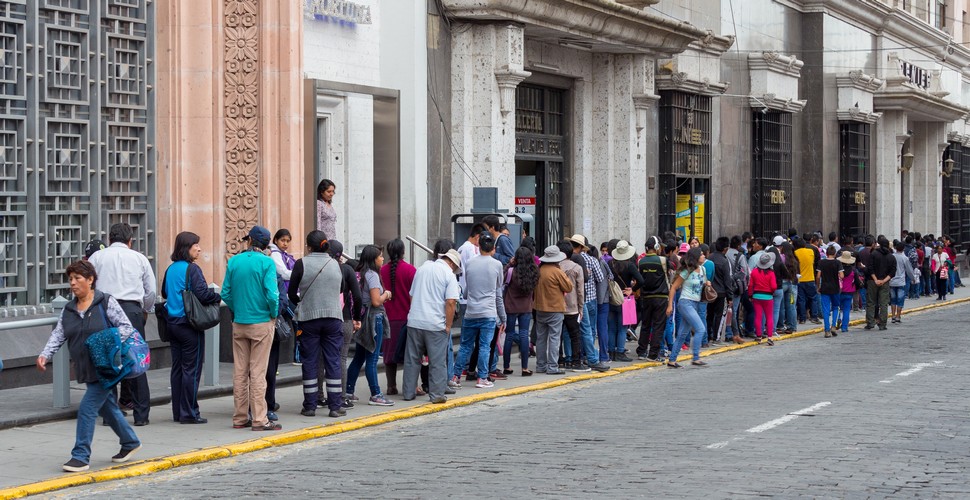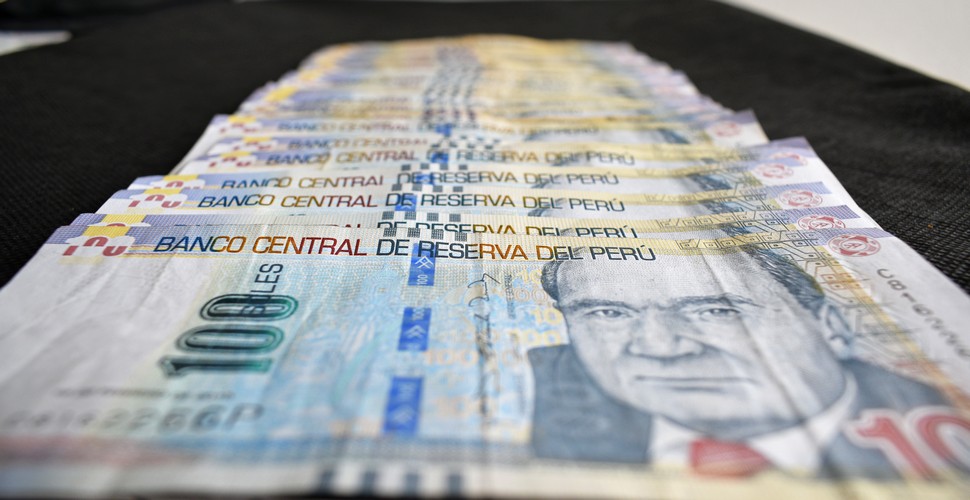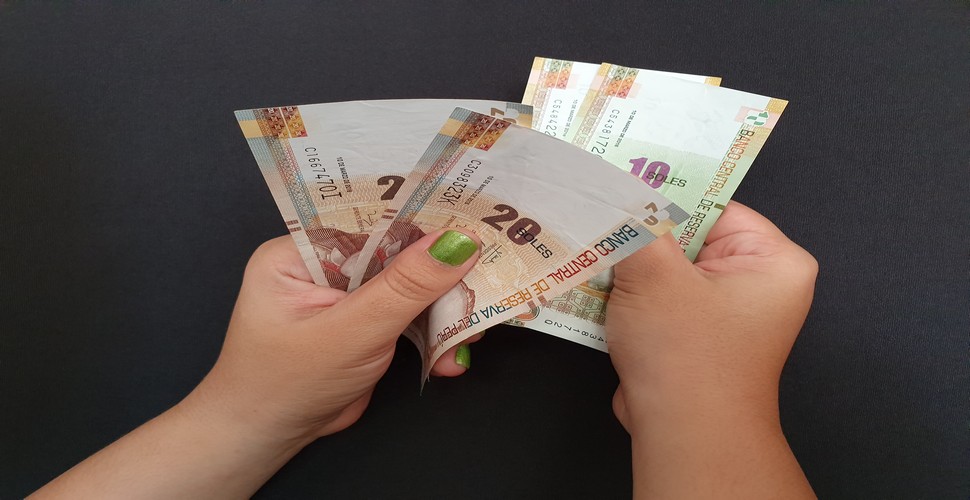

Claire Dean
Travel in South America is a joy to behold. The rich variety of destinations, experiences, landscapes and geography fascinated me so much, that I chose to relocate here, over 20 years ago! The best thing I ever did! Allow me to share my knowledge and passion for Central and South America with you and help you plan your holiday of a lifetime!

CURRENCY EXCHANGE IN PERU: A GUIDE FOR CANADIAN, AMERICAN, AND AUSTRALIAN DOLLARS
Written by:Claire Dean
Last Update: 2025-02-08
When embarking on a journey to the captivating landscapes and rich cultural heritage of Peru, one of the essential aspects to consider is currency exchange. Understanding the type of currency exchanges available, where to make these exchanges, and the specifics for the Canadian, American, and Australian dollars can greatly enhance your travel experience. In this guide, we'll explore the key points to keep in mind when dealing with currency exchange in Peru.
Soles and Dollars
Types of Currency Exchange
Peru's official currency is the Peruvian Sol (PEN). While many places across the country accept major foreign currencies, it's recommended to exchange your dollars for local currency to ensure smooth transactions and avoid unfavorable exchange rates. There are primarily two types of currency exchange platforms in Peru.
Money Exchange
Banks and Financial Institutions:
Major cities and tourist areas in Peru have banks and financial institutions that offer currency exchange services. These establishments generally provide competitive exchange rates and are a reliable option for travelers. It's advisable to have your identification handy, as it may be required for currency exchange transactions.
Peruvian Ban
Authorized Exchange Bureaus:
These bureaus, known as "casas de cambio," are prevalent in tourist areas. While they might offer slightly different rates than banks, they are still a convenient option for exchanging money. Always ensure that the exchange bureau is authorized by the government to avoid scams or unfair rates.
Casa de Cambio
Where to Exchange Canadian, American, and Australian Dollars:
For travelers with Canadian, American, or Australian dollars, here's a breakdown of what to expect:
- Canadian Dollar (CAD): Both banks and exchange bureaus generally accept Canadian dollars. It's advisable to check the current exchange rate before your trip to have a rough idea of how much Peruvian Sol you should receive. Banks might require you to have larger denominations of Canadian dollars for exchange.
- American Dollar (USD): US dollars are widely accepted in Peru, especially in tourist areas. However, be aware that smaller vendors or establishments outside major cities might prefer local currency. Always carry smaller denominations for easier transactions.
- Australian Dollar (AUD): While less common than US dollars, some banks and exchange bureaus might accept Australian dollars. It's recommended to inquire beforehand or opt for exchanging Australian dollars to US dollars before arriving in Peru for broader usability.
Australia Currency
World Exchange Rates
Crisp New Notes
Please be aware that if your dollars are older or ripped/torn in any way, you will have difficulty in changing them. Money changers often refuse to change ripped notes or will give you a lower exchange rate. Please bring new dollar bills that are not torn in any way to avoid any issues.
Canadian Currency
Local Currency
Having Peruvian Sols on hand is essential for places that might not accept foreign currency. This is especially true in more remote or less touristy areas. It is also a recommendation to carry small notes and coins as quite often you can have issues with change also.
Small Change
ATMs
ATMs are widely available in cities and towns. They offer a convenient way to withdraw local currency, but be cautious of withdrawal fees.
Peruvian ATM
Identification
Carry a valid identification document like a passport when exchanging currency. Some places might require it for verification.
Remember your Passport!
Why Choose a Trip to Peru?
Peru beckons adventure seekers with its unparalleled mix of history, nature, and culture. Discover the mystique of Machu Picchu, trek the Andean peaks, and indulge in the gastronomic delights of Lima. Peru is a sensory feast, promising an odyssey where every step unveils a new facet of its captivating beauty. The cost of living in Peru is also generally lower than in most countries so that your hard-earned dollars go even further on your Peru Tour Package. Whether you seek archaeological marvels, high-altitude treks, or a gastronomic journey, Peru offers an immersive experience that transcends expectations.
Money Exchange
Why is a trip to Peru Is Worth It?
Peru is home to the iconic Machu Picchu, the mysterious ancient Incan citadel nestled in the Andes. The sheer magnificence of this archaeological marvel, set against a backdrop of lush green mountains, is an awe-inspiring testament to human ingenuity and history. Peru boasts unparalleled geographical diversity, encompassing everything from the Amazon rainforest to the Andean highlands. Traverse through dramatic landscapes, from arid deserts to pristine beaches, providing a sensory journey through nature's many faces. Peru's cultural heritage is a vibrant mosaic of indigenous traditions, colonial influences, and modern expressions. Explore ancient ruins, visit colonial cities like Cusco, and immerse yourself in the lively traditions that permeate every corner of the country. Peru has emerged as a global culinary hotspot, celebrated for its diverse and delicious cuisine. From the exquisite flavors of ceviche to the hearty warmth of aji de gallina, every meal is a gastronomic adventure showcasing the country's rich culinary heritage. Adventure activities abound, whether trekking the Inca Trail, exploring the Amazon, or sandboarding in the desert oasis of Huacachina, Peru is a playground for outdoor enthusiasts. The country's diverse landscapes offer endless opportunities for thrilling adventures and adrenaline-pumping activities. Peru's markets burst with vibrant colors, showcasing intricate textiles, handmade crafts, and local produce. Additionally, partake in traditional festivals, where streets come alive with music, dance, and elaborate costumes, providing a firsthand experience of Peruvian culture. From the serene beauty of Lake Titicaca to the powerful flow of the Amazon River, Peru's natural landscapes are nothing short of breathtaking. Witness the diverse ecosystems, including cloud forests, beaches, and high-altitude lakes, creating a visual feast for nature lovers. In essence, a trip to Peru transcends the ordinary, offering a kaleidoscope of experiences that cater to every traveler's desires..... Are you convinced yet?
Dollar Bills
Itinerary Options
Craft your journey with precision with our help, depending on the time you have. Here are some main itinerary examples.
Machu Picchu Express
Duration: 8 Days
- Day 1: Lima Start your journey in Peru's capital, exploring the historic center and enjoying the renowned culinary scene.
- Day 2, 3, 4: Cusco Immerse yourself in Inca history, visit Sacsayhuamán, Qoricancha, and explore the charming streets of Cusco.
- Day 5: Sacred Valley Journey through the picturesque Sacred Valley, visiting Pisac, Ollantaytambo, Maras and Moray.
- Day 6: Machu Picchu Take the train to Aguas Calientes, explore Machu Picchu, and consider an overnight stay for sunrise and sunset views.
- Day 7: Return to Cusco Return to Cusco, explore any remaining sites, and depart from Cusco to Lima for your flight back home.
Amazon Rainforest Adventure
Duration: 8 Days
- Day 1:Lima Begin in Lima, preparing for your journey into the Amazon.
- Day 2, 3,4 Iquitos Fly to Iquitos, the gateway to the Amazon. Explore the rainforest, spot wildlife, and engage with local indigenous communities.
- Day 5, 6, 7 Amazon River Cruise Embark on a cruise along the Amazon River, experiencing the diverse ecosystems and wildlife in more depth making the Amazon Rainforest one of the most biodiverse places on the planet.
Return to Iquitos and Departure Return to Iquitos, fly back to Lima for your International flight back home.
Andean Adventure
Duration: 8 Days
- Day 1: Lima Begin in Lima, exploring the city's historical and culinary highlights.
- Day 2,3 4 Puno Journey to Puno the home of Lake Titicaca and explore the stunning floating Islands of Uros, the enormous sea like expanse of water and local life on the highest navigable lake in the world!
- Day 5: Arequipa Discover the colonial architecture of Arequipa, known as the "White City."
- Day 6, 7: Colca Canyon Trek or drive to Colca Canyon, home to the majestic Andean condor, and enjoy the scenic landscapes and traditional local communities that call the canyon home.
- Day 8: Return to Arequipa and Departure: Return to Arequipa, and depart from Arequipa to Lima for your flight back home.
*Please remember that these are example itineraries and we can tailor your itinerary to the time and budget you have available!
S/.100 Sol Notes
Difficulty Level of a Peru Trip
Peru caters to all types of adventurers, from the seasoned trekker to the leisurely explorer. The challenging Inca Trail rewards with breathtaking vistas, while the Sacred Valley offers a more relaxed pace. For luxury travelers, there are also many luxury activities to enjoy such as The Hiram Bingham Train journey to Machu Picchu and op-ed Amazon Lodges. Tailor your itinerary to match your fitness level, and how energetic you want your trip to be, ensuring an enjoyable and fulfilling experience.
Peruvian Coins
Trip Advisor Comments
- "I had a seamless experience exchanging money in Peru! Found a reliable currency exchange at the Lima airport with fair rates. Also, many local markets and banks in Cusco provide hassle-free services. Make sure to check rates beforehand and consider withdrawing local currency for smaller transactions. Overall, smooth sailing on the financial front".
- "For fellow travelers, consider exchanging a small amount at the airport and exploring local markets for better rates. In Cusco, I stumbled upon a hidden currency exchange with fantastic rates near the Plaza de Armas. Locals are friendly and might share insider tips on where to get the best deals. Just keep an eye out for authentic places rather than the tourist traps".
- "I used ATMs in major cities like Lima and Cusco, and it was incredibly convenient. Most ATMs dispense local currency, so no need to worry about carrying large sums. Make sure to inform your bank about your travel dates to avoid any hiccups. Some ATMs might charge fees, so check with your bank for the best options. Safe and secure, and I had no issues during my entire trip".
- "Be cautious when exchanging money on the streets, especially in busy tourist areas. I encountered a situation where the rates seemed great, but hidden fees left me with less than expected. Stick to reputable currency exchange offices and banks to avoid any unpleasant surprises. Lesson learned: always double-check and ask about fees upfront".
- "I preferred using banks for currency exchange in Peru. Found it more reliable and secure, especially in larger cities. Some banks even have English-speaking staff, making the process smoother. Remember to bring your passport, and if you have time, shop around different banks for the best rates. Overall, had a positive experience with hassle-free transactions".
- "If you're heading to remote areas, plan ahead for currency exchange. Small towns may not have many options, so it's wise to carry enough local currency in small denominations.
- Consider exchanging at major cities before venturing into less touristy regions. I ran into a few challenges in the mountains, but with careful planning, it's manageable".
For more comments about how to change money in Peru check Trip Advisor here.
Nuevo Soles
Best Time to Visit Peru
Timing is key for an optimal experience. Plan your visit during the dry season from May to September to enjoy clear skies, sunny days, and comfortable daytime temperatures. Be aware that temperatures do drop considerably at night. This ensures the perfect conditions for iconic treks and exploration without weather-related disruptions. Please bear in mind that this coincides with the high season so prices can increase as well as the number of visitors to Peru. Summer on the other hand means rain in the mountain regions and Amazon rainforest, however, fewer people are traveling, everywhere is lush and green and prices can be much lower.
Dollars n´ Soles
Can You Do a Peru Trip Alone?
Solo adventurers fear not! Peru welcomes independent travelers with open arms. Join group tours for shared experiences, and lower prices, connect with like-minded explorers, and embrace the warm hospitality of the locals. Solo travel in Peru is not just feasible; it's a gateway to new friendships and unforgettable moments.
Handful of Cash
Considerations for Managing Your Money on Your Peru Trip
- Local Currency
Peru's official currency is the Peruvian Sol (PEN). Ensure you have a sufficient amount of local currency for smaller transactions, especially in markets and rural areas. - Currency Exchange
Exchange money at reputable currency exchange offices, banks, or ATMs. Avoid street vendors, as they might offer less favorable rates or be involved in scams. - Check Rates
Keep an eye on the exchange rates and compare them at different locations. Rates can vary, so choose the option that offers the best value. - Inform Your Bank
Notify your bank about your travel dates and destinations to prevent any issues with your debit or credit cards. - ATM Locations
Use ATMs in well-lit, secure areas such as banks. ATMs in major cities are widely available but be prepared with some cash for remote areas. - Accepted Cards
Major credit cards are generally accepted in urban areas and upscale establishments. However, cash is often preferred in markets and smaller establishments. - Foreign Transaction Fees
Check with your bank about foreign transaction fees associated with credit card usage. Some cards offer fee-free international transactions. - Money Belts
Consider using a money belt or a hidden pouch to keep your valuables, including cash, cards, and important documents, secure. - Small Bills
Have a mix of small bills for daily transactions, as some places might not have change for larger denominations. - Negotiating Prices
In markets, bargaining is common. Have an idea of the local prices for common items to ensure fair deals. - Daily Budget
Establish a daily budget to manage your spending. Consider costs for accommodation, meals, transportation, and activities. - Emergency Fund
Set aside a small emergency fund for unexpected expenses or situations where cards may not be accepted. - Limited ATMs in Remote Regions
In remote areas, ATMs may be scarce. Plan to withdraw enough cash in major cities before heading to less touristy regions.
Cash-Only Establishments: Some remote areas may only accept cash. Inquire in advance and plan accordingly. - Local Advice
Seek advice from locals or fellow travelers on the best places to exchange money and common practices for handling finances. - Local Banks
In major cities, using reputable local banks for currency exchange can be a reliable option. - Technology and Apps
Mobile Banking Apps
Install your bank's mobile app for real-time updates on transactions and balances.
Currency Converter Apps
Utilize currency converter apps to quickly assess prices and exchange rates.
Peruvian Credit Card
Getting to Peru
Kickstart your adventure by flying into Lima's Jorge Chávez International Airport. Explore convenient domestic flights to reach key destinations like Cusco, Juliaca, and Arequipa. Efficient transportation options ensure you spend less time navigating logistics and more time experiencing the wonders of Peru.
Lima Bank
Essential Packing List for Your Peru Trip
-
As well as the usual packing list, here is an essential packing list that focuses more on money management while you are visiting Peru.
-
Local Currency (Peruvian Sol): Bring a sufficient amount for initial expenses and situations where card payments may not be accepted.
-
US Dollars: Keep some small denominations for emergencies or places that accept USD.
-
Credit/Debit Cards: Carry at least two cards from different networks (Visa, MasterCard) for broader acceptance.
-
Travel Wallet or Money Belt: A secure and discreet way to carry cash, cards, and important documents.
Documents
-
Passport: Ensure it's valid for at least six months beyond your planned departure date. You will usually be asked for your passport for any money transactions during your Peru Vacation Package.
-
Visa and Entry Documents: Check if you need a visa for Peru and have all the necessary entry documents.
-
Emergency Contact Information: Keep a list of emergency contacts and photocopies of important documents.
Technology and Accessories
-
Smartphone: Install relevant apps for currency conversion, mobile banking, and translation.
-
Power Bank: Keep your devices charged, especially if you rely on electronic transactions.
-
Adapter: Ensure your devices can be charged with the local power outlets.
Money Management Tools
-
Currency Converter App: Download a reliable currency converter app to check exchange rates on the go.
-
Banking Apps: Install your bank's mobile app for real-time transaction monitoring and notifications.
-
Travel Prepaid Card: Consider a travel prepaid card for added security and convenience.
Travel Accessories
-
Travel-Sized Lock: Secure your belongings in hostels or hotels.
-
Lightweight Daypack: Ideal for day trips, carrying essentials, and keeping valuables secure.
Miscellaneous
-
Spanish Phrasebook: Even basic phrases can enhance your communication.
-
Reusable Shopping Bag: Useful for carrying purchases and reducing plastic usage.
-
Snacks: Pack non-perishable snacks for long journeys or hikes.
-
Padlock: Secure your belongings in lockers or luggage.
-
Emergency Cash: Keep a small amount of USD or local currency in a separate location for emergencies.
-
Copy of Insurance Policy: Carry a printed or digital copy of your travel insurance policy.
-
Familiarize yourself with the official currency of Peru, which is the Peruvian Sol (PEN). Understand the current exchange rates to have a baseline for your financial planning.
-
Notify your bank and credit card companies about your travel dates and destinations. This prevents them from flagging your transactions as suspicious, ensuring seamless card usage.
-
Select credit cards that offer favorable terms for international travel. Look for cards with minimal foreign transaction fees and broad acceptance networks (Visa and MasterCard are widely used in Peru).
-
Explore the option of obtaining a travel prepaid card. These cards offer security and convenience, allowing you to load money onto the card in your home currency and use it as needed in Peru.
-
Avoid relying solely on one payment method. Carry a mix of cash (both local currency and USD), credit cards, and a prepaid travel card to ensure you're prepared for various situations.
-
Install the mobile apps for your bank and credit card companies. This allows you to monitor transactions, check balances, and receive notifications, providing real-time control over your finances.
-
Research and compare currency exchange options. While exchanging money at banks or currency exchange offices is common, withdrawing local currency from ATMs can also be a convenient and cost-effective option.
-
Be aware of local banking hours in Peru. Banks typically operate on weekdays, and some close for lunch. Plan your currency exchange and banking activities accordingly.
-
Keep a small amount of emergency cash in USD or a widely accepted currency. This reserve can be handy in case of unexpected situations or if you encounter difficulties with your primary payment methods.
-
Check Card Compatibility: Verify that your credit and debit cards are compatible with local ATMs in Peru. Cirrus and networks are commonly accepted.
-
Budget for Cash-Only Transactions: In certain markets, small towns, or remote areas, cash may be the primary form of payment. Plan your budget accordingly and withdraw sufficient cash when needed.
-
Avoid exchanging money with street vendors or individuals, as this can be risky. Stick to reputable currency exchange offices, banks, or ATMs for more secure transactions.
-
Invest in comprehensive travel insurance that covers medical emergencies, trip cancellations, and unexpected expenses. Ensure you have a copy of your insurance policy readily available.
-
Keep a record of important financial numbers, including your bank's emergency contact line, credit card hotline, and the local contact number for your embassy or consulate.
-
Safeguard your passport, credit cards, and travel insurance details. Consider making digital copies and storing them securely online.
Banco Continental by Night
Altitude Sickness Tips for Your Peru Trip
Combat altitude sickness with strategic acclimatization days in Cusco. Stay hydrated with local remedies like coca tea and coca leaves, proven effective by generations of local people. These simple yet invaluable tips ensure a comfortable and enjoyable exploration of Peru's high-altitude wonders.
Soles Exchange
Pro Tips for a Seamless Trip to Peru
At the time of writing this article, these are the current exchange rates for the Peruvian sol:
Canadian dollar - 1= s/. 2.72soles
Australian dollar - 1= s/. 2.37 soles
US Dollar - 1 = s/. 3.70 soles
UK - 1 = s/.4.66 soles
- Please be aware that if your dollars are older or ripped/torn in any way, you will have difficulty in changing them. Money changers often refuse to change ripped notes or will give you a lower exchange rate. Please bring new dollar bills that are not torn in any way to avoid any issues.
- Be aware of any fees associated with ATM withdrawals, both from your home bank and the local bank in Peru. Some banks may charge a foreign transaction fee, so clarify these details before your Peru trip.
- Inform your bank about your travel dates and destinations to prevent any potential issues with your cards. This ensures that your transactions are not flagged as suspicious.
- Have a mix of small and larger denominations of local currency. This makes it easier to handle transactions, especially in markets and smaller establishments where change may be limited.
- Stay updated on the current exchange rate and understand the value of the local currency. This knowledge will empower you during transactions and help you make informed financial decisions.
- If unsure where to exchange money, ask locals or fellow travelers for recommendations. They may provide insights into trustworthy and reliable currency exchange options.
- When receiving local currency, take a moment to verify its authenticity. Be aware of common security features to ensure you're receiving genuine bills.
- Before exchanging money, compare rates at different currency exchange offices, banks, and ATMs. Even a small difference in rates can impact the amount you receive.
New Nuevo Soles
Cost Breakdown of a Trip to Peru
The cost of a trip to Peru can vary widely based on factors such as travel style, duration, accommodation preferences, activities, and personal spending habits. Here's a general cost breakdown to give you an idea of the expenses you might incur during your journey to Peru:
Flights
-
Cost: $600 - $1,200 (varies based on departure location and time of booking).
-
Pro Tip: Booking in advance and being flexible with travel dates can help secure better deals.
Accommodation
-
Mid-Range Hotels: $50 - $150 per night.
-
Luxury Hotels: $150 and above per night.
-
Pro Tip: Consider a mix of accommodations to balance comfort and budget.
Transportation
-
Domestic Flights: $50 - $150 per leg.
-
Bus Travel: $5 - $30 per journey.
-
Taxis: Varies by location; negotiate or use metered taxis.
-
Pro Tip: Use local transportation for a more immersive experience. Book domestic flights in advance for better rates.
Food
-
Street Food/Local Eateries: $2 - $10 per meal.
-
Mid-Range Restaurants: $10 - $30 per person.
-
Fine Dining: $30 and above per person.
-
Pro Tip: Try local street food for authentic flavors and cost savings.
Tours and Activities
-
Machu Picchu Entry: $50 - $70 (varies by time and type of entry).
-
Inca Trail Trek: $500 - $1,000 (if booking through a tour operator).
-
Amazon Rainforest Tours: $200 - $500 per day.
Entrance Fees to Sites
-
Museums and Historical Sites: $5 - $20 per entry.
-
Pro Tip: Some sites offer discounts for students or specific age groups. Check in advance. Check the list of inclusions about what is included in your Peru Tour Package
Travel Insurance
-
Cost: $50 - $150 for a standard policy.
-
Pro Tip: Ensure your policy covers medical emergencies, trip cancellations, and unexpected expenses.
Visa Fees
-
Cost: Generally not required for short stays (check visa policies based on your nationality).
-
Pro Tip: Confirm visa requirements before travel.
Miscellaneous (Shopping, Souvenirs, Tips)
-
Local SIM Card: Cost: $5 - $20 for a local SIM card with data.
-
Pro Tip: Having a local SIM card can be convenient for navigation and communication.
Health Precautions
-
Vaccinations and Medications: Cost varies; check with a healthcare provider.
-
Pro Tip: Consult a travel clinic well in advance to ensure you have the necessary vaccinations.
-
Cost: $5 - $20 for medications like Diamox.
-
Pro Tip: Acclimatize slowly and stay hydrated to minimize altitude sickness.
Emergency Fund
-
Recommended: $100 - $200 for unforeseen circumstances.
-
Pro Tip: Keep a small reserve in cash for emergencies.
Total Estimated Budget
-
Mid-Range Traveler: $70 - $150 per day.
-
Luxury Traveler: $150 and above per day.
This breakdown provides a rough estimate, and actual costs can vary. It's advisable to research and plan based on your specific preferences and travel style. Additionally, consider the season of travel, as high seasons may result in increased costs for accommodation and tours.
Bank Queue
FAQs
1. Can I use my credit/debit cards in Peru?
Yes, major credit and debit cards are widely accepted in urban areas, hotels, and larger establishments. Visa and MasterCard are commonly used.
2. Are there ATMs in Peru?
Yes, ATMs are prevalent in major cities and tourist destinations. Be sure to use ATMs affiliated with reputable banks to minimize fees.
3. Should I exchange money at the airport?
Exchanging a small amount at the airport can be convenient, but rates might not be the most favorable. Consider exchanging a larger amount at a bank or currency exchange office for better rates.
4. Can I use US dollars in Peru?
Yes, US dollars are widely accepted in many places, especially in tourist areas. However, it's advisable to have some local currency for smaller transactions and in more remote regions.
5. What is the local currency in Peru?
The official currency of Peru is the Peruvian Sol (PEN).
6. Are there fees for using ATMs in Peru?
Yes, some ATMs may charge a fee for withdrawals. Additionally, your home bank may impose foreign transaction fees. Check with your bank about fees associated with international ATM usage.
7. Is it better to exchange money in banks or currency exchange offices?
Both options are viable. Banks may offer competitive rates, and currency exchange offices can be convenient. Compare rates and consider factors like operating hours and locations.
8. Can I exchange money at hotels in Peru?
While some hotels offer currency exchange services, rates may not be as favorable. It's generally recommended to use banks or dedicated currency exchange offices for better rates.
9. Is it safe to exchange money on the streets in Peru?
It's not recommended to exchange money with street vendors or individuals, as this can be risky. Stick to reputable currency exchange offices or banks for secure transactions.
10. What should I do if my credit/debit card is lost or stolen?
- Contact your bank immediately to report the loss or theft. Most banks have a 24/7 helpline for such emergencies. Have a copy of your card details and the bank's contact information in a secure location.
11. Are there any restrictions on the amount of money I can bring into Peru?
- Peru does not have strict restrictions on the amount of money you can bring in, but it's advisable to declare amounts over $10,000 when entering the country.
12. Should I exchange money before arriving in Peru?
- It's not necessary to exchange a large amount before arriving. You can exchange a small amount for immediate expenses at the airport and then seek better rates at banks or exchange offices.
13. Can I use traveler's checks in Peru?
- While traveler's checks are less commonly used nowadays, some banks may still accept them. However, it's more convenient to rely on a combination of cash and cards.
14. What's the best way to handle money in remote areas of Peru?
- In remote areas, cash is often the preferred form of payment. Ensure you withdraw sufficient local currency in larger cities before venturing into less touristy regions.
As you set foot in Peru's enchanting landscapes, having a good grasp of currency exchange options will undoubtedly enhance your journey. From the bustling streets of Lima to the ancient ruins of Machu Picchu, seamless currency transactions will ensure your focus remains on the incredible experiences this country has to offer. Find out more here about currency exchange!
Hundred Soles Notes
As you set foot in Peru's enchanting landscapes, having a good grasp of currency exchange options will undoubtedly enhance your journey. From the bustling streets of Lima to the ancient ruins of Machu Picchu, seamless currency transactions will ensure your focus remains on the incredible experiences this country has to offer. Find out more here about currency exchange!


